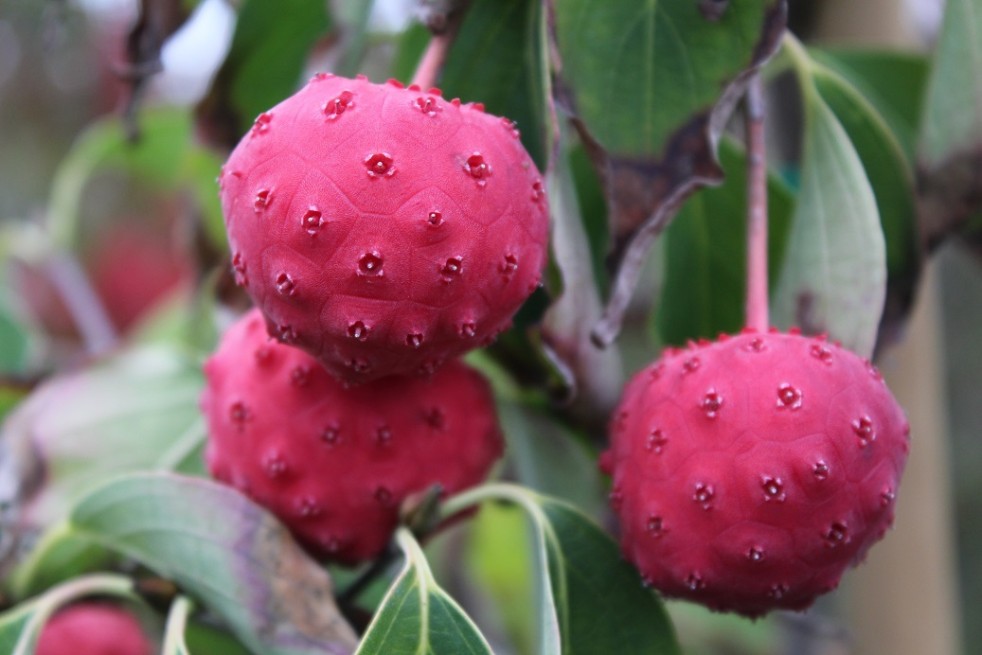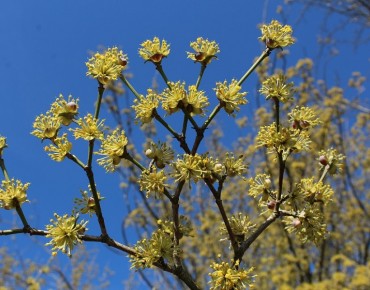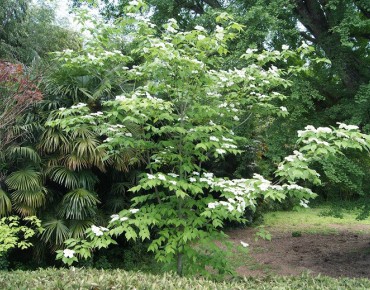- novelty
- -10%
- Out-of-Stock
Big fruited Japanese Dogwood
Cornus Kousa Christine
Description
Big fruited Japanese Dogwood – Cornus kousa 'Christine'
(also known as Chinese dogwood, strawberry tree, Yamaboushi, Benthamidia kousa)
Key Feature
The Japanese Dogwood with large fruits (Cornus kousa 'Christine') is a decorative and productive shrub, native to Japan and Korea. This variety combines a spectacular late-spring bloom with tasty, edible fruits reminiscent of mango and strawberry. With a slow to moderate growth rate, it forms a beautiful layered horizontal branching habit, reaching 2 to 4 meters in height and spread. In autumn, its foliage turns a striking purplish-red, making it an eye-catching feature throughout the seasons. The red to pink spherical fruits are rich in vitamin C and antioxidants, perfect for eating fresh or making jams and desserts.
Origin and History
Origin: Japan, Korea, China
Botanical family: Cornaceae
Introduced to Europe in the 19th century as an ornamental species, 'Christine' stands out within the Cornus kousa group for its abundant and flavourful fruits—a rare trait among ornamental dogwoods.
Description and Habit
Mature height: 2 to 4 m
Spread: up to 4 m
Form: Layered, horizontal branching
Bark: Grey to light brown, flaking with age
Foliage: Deciduous, green in summer, deep purplish-red in autumn
Growth rate: Moderate (30 to 40 cm/year)
Hardiness: Excellent (down to −20 °C)
Flowering
Bloom time: Late May to June
Flowers: Large white bracts forming star-like blooms, highly ornamental
Garden interest: Exceptional show of color and texture
Fruiting
Season: Late August to October
Shape and color: Round, red to pink, 2–4 cm diameter
Taste: Sweet, exotic flavour reminiscent of mango and strawberry
Use: Eaten fresh, in jams, jellies or baked goods
Nutritional value: High in vitamin C, fibre and antioxidants
Light and Soil
Exposure: Partial sun to dappled shade, best in woodland edge
Soil type: Humus-rich, cool, well-drained, neutral to slightly acidic
Important: Avoid dry or alkaline soils
Planting
Planting season: October to March, outside frost periods
Soil prep: Add mature compost and mulch generously
Spacing: 3 to 4 m between plants
Advice: Water regularly for the first two years
Water Needs
Young plants: Consistent watering from spring through autumn
Mature plants: Less demanding but not drought tolerant
Pruning
When and how:
-
Light shaping after flowering
-
Remove deadwood in late winter
Tolerance: Handles pruning well if moderate
Propagation
Methods: Grafting (onto Cornus kousa), occasionally layering or seeds
Note: Fruit-producing cultivars are propagated mainly by grafting
Garden Use
Ideal for:
-
Standalone ornamental shrub
-
Fruit and flower border
-
Shady edible gardens or woodland edges
Companions: Hostas, ferns, hydrangeas, foliage contrast plants
Culinary and Medicinal Use
Fruits are edible and sweet, with an exotic taste. They are rich in antioxidants and vitamin C. In Asian folk medicine, they are sometimes used for digestion and revitalization.
Pests and Diseases
Resistance: Generally strong
Potential issues: Powdery mildew, leaf spot in overly wet conditions
Prevention: Good air flow, mulch, and proper watering
Growing Tips
-
Choose moist, humus-rich woodland soil
-
Add compost in late winter
-
Refresh mulch in spring
-
Avoid full sun and drought stress
-
Ensure adequate watering early on
Cultivar Highlights
'Christine' is valued for:
-
Abundant large edible fruits
-
Striking white blooms
-
Deep red autumn foliage
-
Year-round ornamental appeal and cold resistance
The Japanese Dogwood with large fruits (Cornus kousa 'Christine') is an exceptional choice for gardens that combine ornamental beauty and harvest potential. Its large edible fruits, vibrant autumn color, and showy spring blooms make it ideal for naturalistic gardens, edible borders, or woodland plantings. Hardy and easy to grow, this shrub thrives in humus-rich soils with partial shade. Whether you're drawn to its culinary uses, nutritional benefits, or simply its striking year-round presence, 'Christine' offers a balance of flavor, resilience, and visual delight.
Features
- Common name : Big fruited Japanese Dogwood
- Family : Cornaceae
- Category : shrub
- Spread : 4 m
- Foliage : deciduous
- Color of flowers : white
- Fruit : edible fruit, large red fruit, fleshy
- Harvest : end of August
- Use : isolated, clump, flowering hedge
- Soil : rich and well-drained
- Habit : upright
- Earth to use : 75% universal potting soil and 25% heath earth
- Enemies : nothing to report
- Possible diseases : anthracnose
Expédition & livraison
How does the delivery work?
 As soon as you place your order your plants are selected
As soon as you place your order your plants are selected Each order is processed individually.
Each order is processed individually. Plants are packed, staked and labeled.
Plants are packed, staked and labeled. Packaging is carefully implemented to avoid any problems.
Packaging is carefully implemented to avoid any problems. Packages are ready to be shipped.
Packages are ready to be shipped.
Our delivery methods
Shipping of our plants throughout Europe (except overseas and islands).
Customer reviews



















